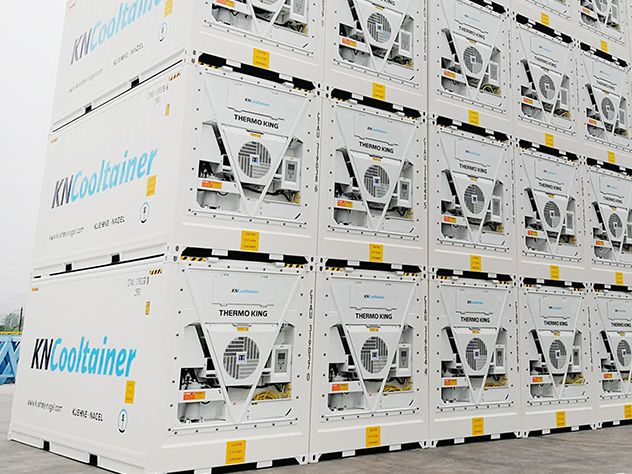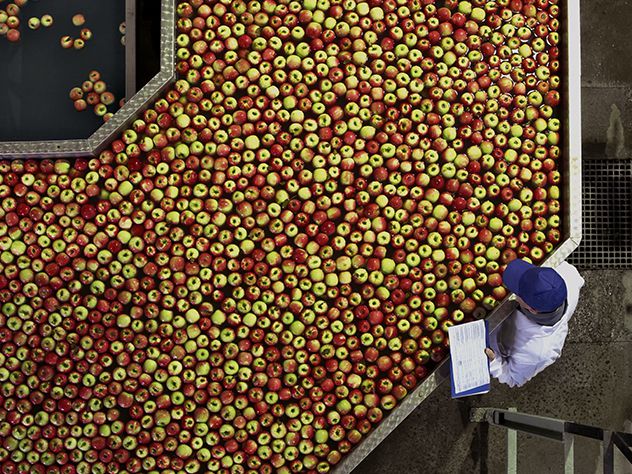Mind the melting point… and the fat bloom
Residing in Europe’s 2nd biggest chocolate exporting nation partially steered Marc’s ambition to become an expert in chocolate logistics. He rolled into the reefer logistics world 15 years ago. “It was decided then to establish a dedicated Reefer desk in our Sea Logistics department to bundle our expertise and design a suitable solution for customers in need of temperature-controlled sea freight, and I’ve been in charge of developing it ever since.” As such, the reefer expert and self-declared sweet tooth shows potential clients since the start how Kuehne+Nagel can protect their chocolate delicacies (alongside other perishables) during their logistics journey from two major dangers: fat bloom and melting.
Ever noticed greyish streaks on your chocolate bar? Yup, that’s fat bloom. While it won’t affect the taste, fat bloom and melt are both aesthetic problems that can turn chocolate cargo unsellable! Like any reefer product, the circumstances during transportation are key to avoid it. “Fat bloom – the separation of the cacao butter from the other components of chocolate - occurs when the temperatures fluctuate too much during the chocolate’s journey. A so-called temperature shock”, Marc clarifies. “In Kuehne+Nagel we can offer tracking devices for the customer to keep track of the temperature and location in real time.” Our access to reefer containers in times when availability is low, bring another advantage. “Kuehne+Nagel’s good reputation and dedication to the reefer product make us a reliable partner for carriers with whom we have built strong partnerships over the years. This places us in a position to serve our own customers even in peak seasons”, Marc concludes.
Chocolate Tea Cakes for Kuwait
Unsurprisingly the demand for chocolate surges around the holidays, making that time of the year a peak season for chocolate logistics. According to Marc, “September is the busiest month for us in Antwerp due to the high volumes of chocolates that have to be sent to the USA and Canada. Around that time the North American distribution chains ramp up their stocks to redistribute chocolate to their local stores for Thanksgiving and the holidays.” However, the volumes for so-called ‘industrial’ chocolate – that is, chocolate used as an ingredient in confectionaries such as cookies, ice cream or waffles – are less susceptible to seasonal changes in demand making a mix of both types of customers ideal. "That way we can ship chocolate year-round ensuring that our specialised teams have steadier volumes to work with."
Heathrow-based Perishables Air Logistics expert Sam Camphion explains that his department also handles the occasional chocolate shipment. “When we transport chocolate by air, it mainly entails consolidation shipments for retail customers to negate the more expensive cost of air logistics”, he says. “Although there are exceptions. One example are chocolate tea cakes, you know, these chocolate covered marshmallow-like sweets that are quite popular here in the UK. In the Middle East, people are huge fans of these sweets as well and two or three times a year we have a big consignment of around 2 tonnes of just tea cakes flying over to Kuwait.”
No matter which transportation mode you pick, your chocolate is always in good hands with our KN FreshChain experts. While our teams around the globe are on the same page in terms of customer care, opinions remain divided on the age-old dilemma: whether Belgian or Swiss chocolate is the best. Marc: “I’ll have you know that neither of these famous chocolate-producing nations rank first as chocolate exporters in Europe. Germany is the number one! But if you ask about taste, all I can say is that in my opinion chocolate is great no matter where it was produced. Although that's probably the sweet tooth talking!"






